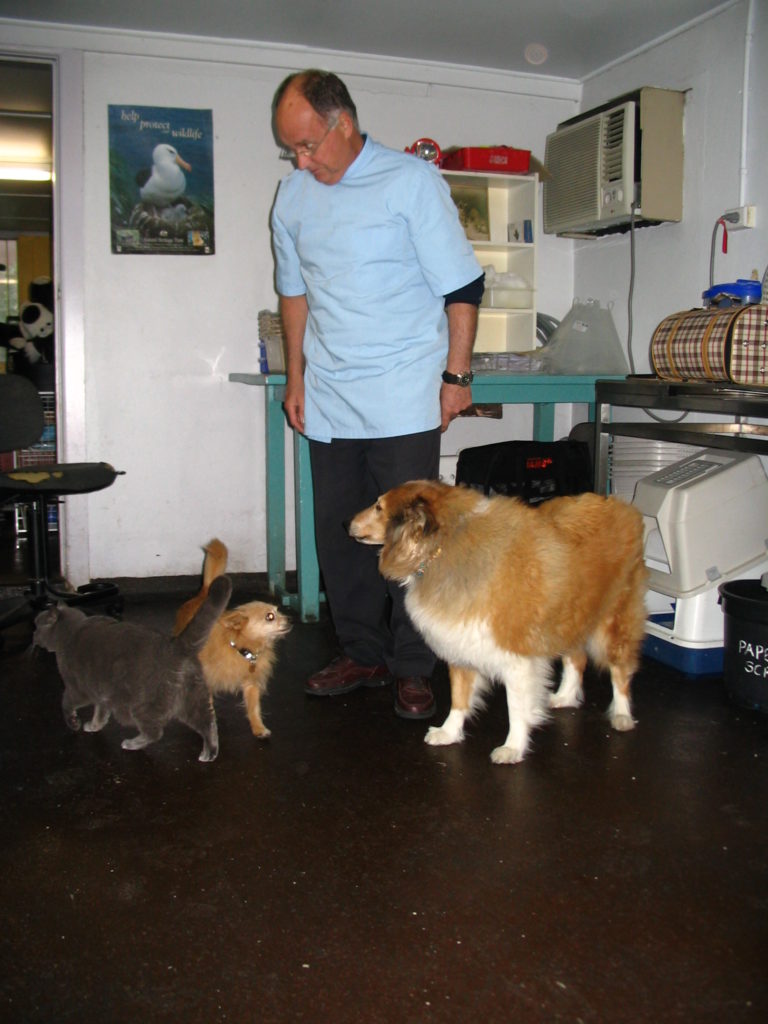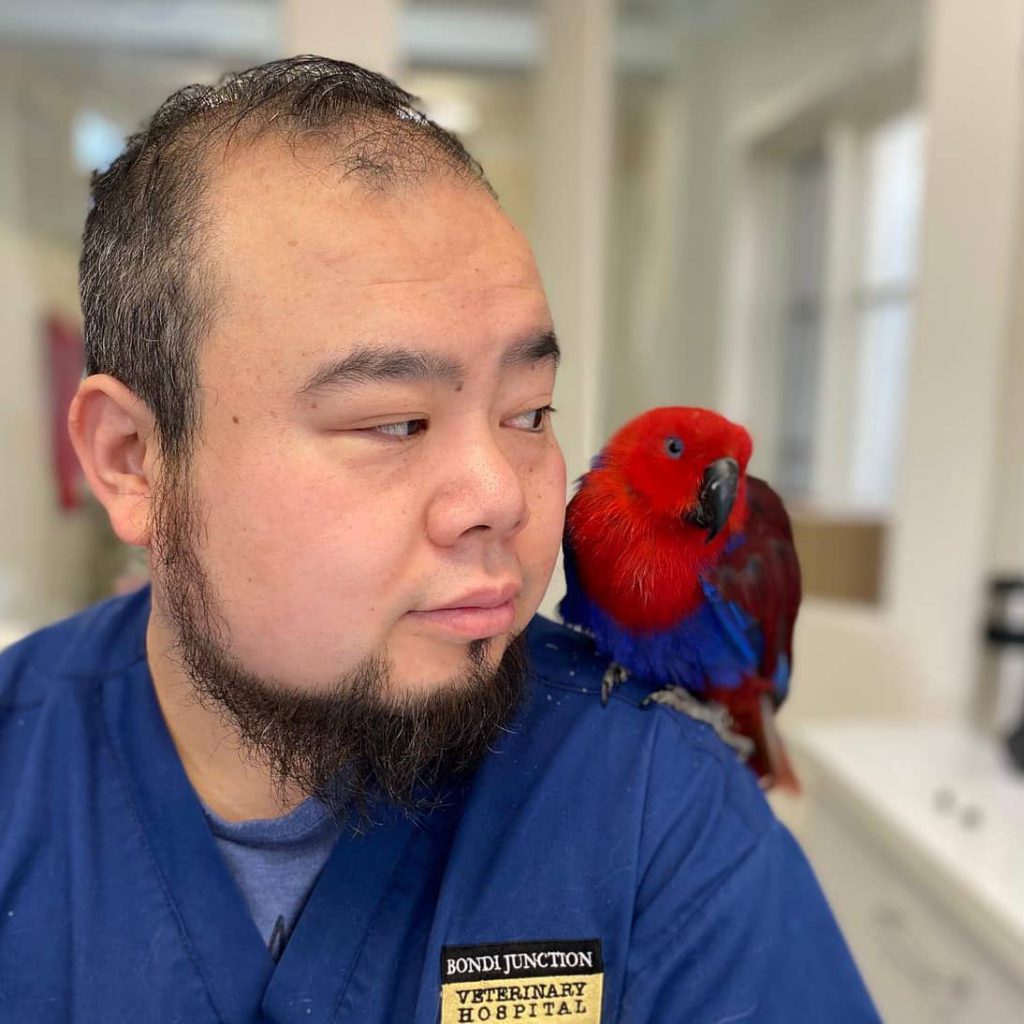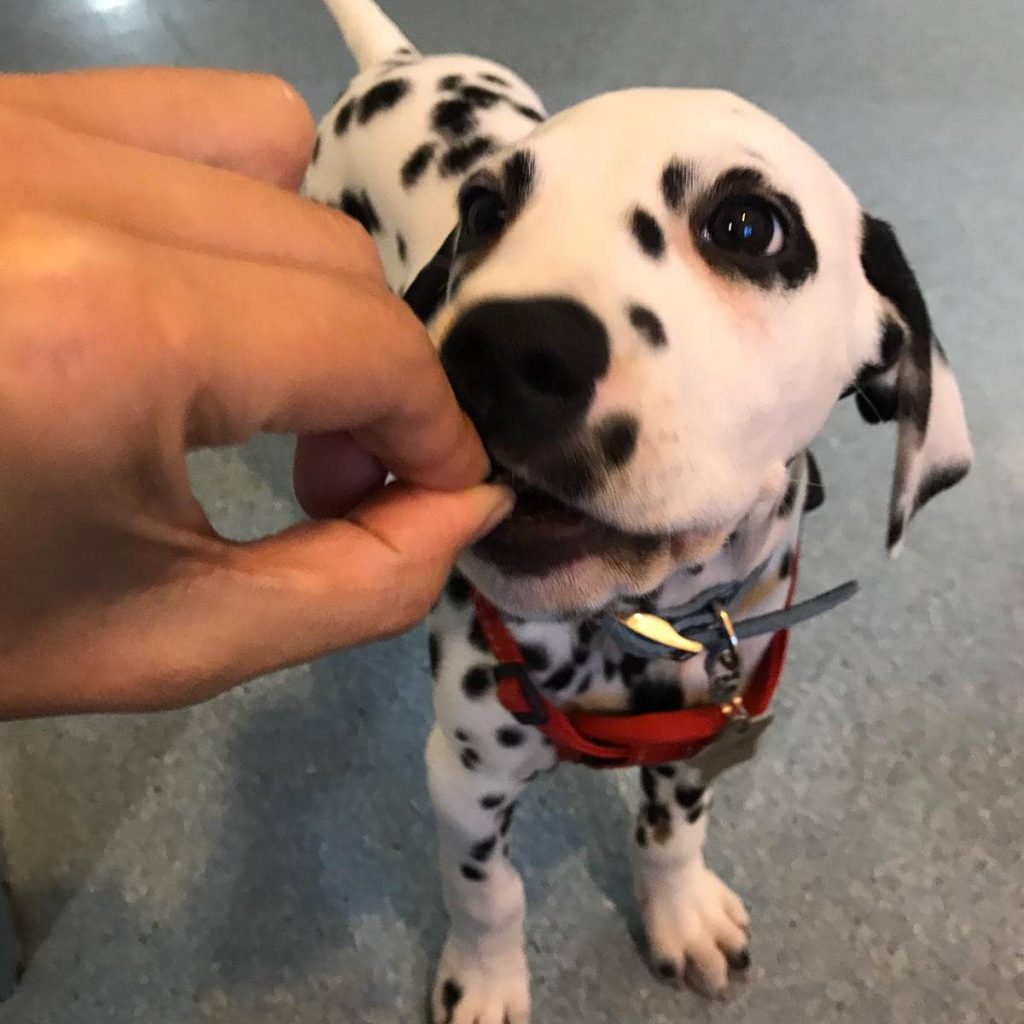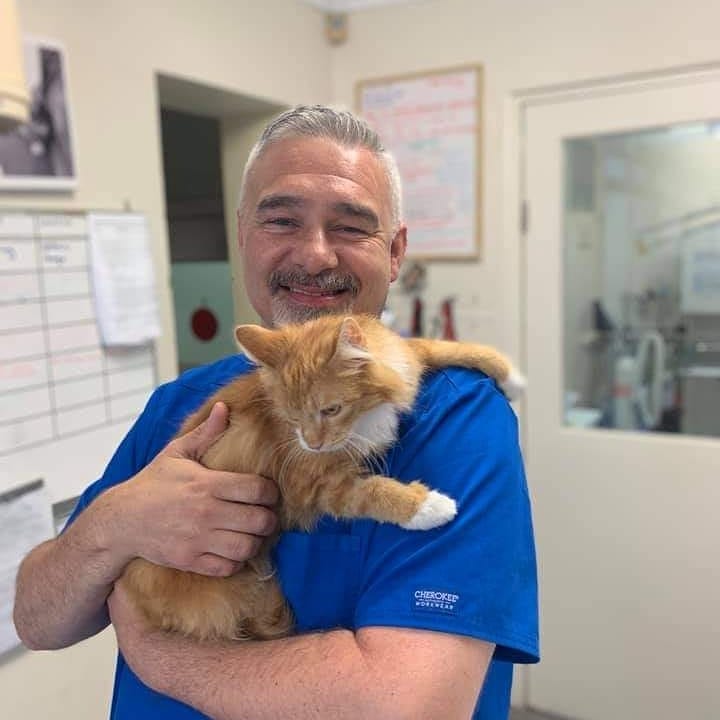History
The Bondi Junction Veterinary Hospital was founded in 1934 by Major Norman Larkin and is a purpose-built veterinary hospital remarkable for its time. We keep up with the times inside whilst we continue the same true community spirit and passion for the animals of Bondi Junction.
Major Norman Larkin
The Bondi Junction Veterinary Hospital was built in 1934 as the practice and residence of Major Norman Larkin a 1926 graduate of the University of Sydney.
Norman Larkin, graduating into the roaring twenties had a passion for horses that led him to a position of eminence. He was a President of the Thoroughbred Breeders Association, very involved in the AJC, ran the jockey school at Randwick for over 30 years and also bred thoroughbreds. He was an external examiner at the University of Sydney.
The photos we have of him show a dynamic man with thick black hair and a centre part, always immaculately dressed. He must have been equally at ease with all members of the equine world, owners, breeders, trainers and jockeys. The descriptions of him teaching jockeys “manners and behaviour” seem comical today but the school was set up because the jockeys had no schooling from the age of fourteen when they started their apprenticeship.
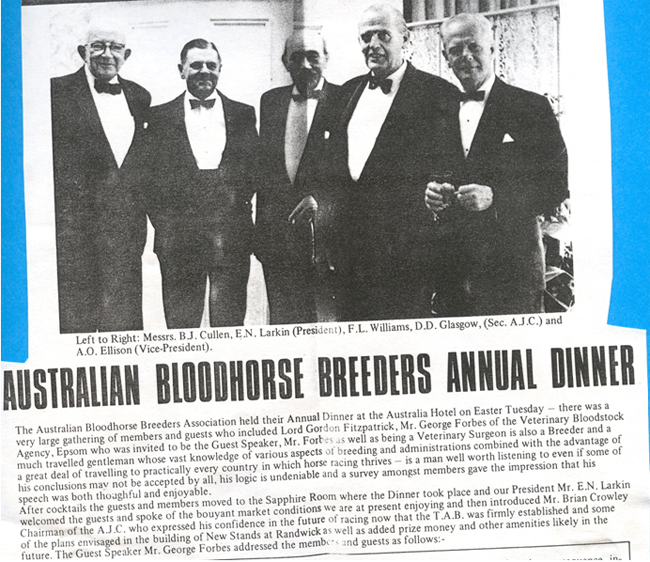
The Great Depression and WWII
When the hospital was built in 1934, Australia was only starting to recover from the Great Depression. Unemployment rates were still very high. The lack of money meant that cheap or public entertainment was everything. People were obsessed with horse racing (Norman Larkin was in one of the few growth industries) and sport in general. The beaches were crowded and cinemas were full as people sought escape from desperate situations.
Despite the depression the Eastern Suburbs was a pocket of Australia where there was still great wealth. The film industry in Australia was born in this period down the road from us in Ebley St in the building that is “Spotlight” today. Bondi Junction was a thriving commercial centre and as now a main transport link.
In the 1930s small animal medicine or surgery was a rarity. Horses were still used for transport and there were still dairies in the Eastern Suburbs. Most children of that era only remember taking a family pet to the vet to be “put down”. Mr. Larkin saw small animals in the evenings when he got home from the “real” work.
It took a lot of foresight to build a Veterinary Hospital for small animals at that time. The words Veterinary Hospital are embedded in the brickwork above the front door. The design of the building is a bit of a mystery today( why the steep front steps? ) but the building certainly looks impressive from Lawson St.
Mr. Larkin joined the Australian Army Veterinary Corps in World War II and gained the rank of Major. It is interesting how important horses still were in warfare at this stage and that the Australian Army Veterinary Corp was not disbanded until 1946. He was also involved with the police horses.
It was not until after the Second World War that vets could consider making a living from small animals. The small animal side of the Bondi Junction Veterinary Hospital grew under the direction of Major Larkin who also diversified into dog and cat boarding. He brought up his family in the flat upstairs and his daughter was married from the Veterinary Hospital in 1964.
Dr Robert Steel
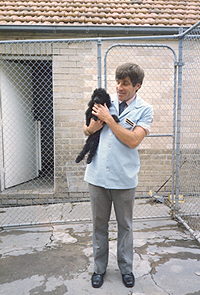
In the mid 1960s Robert Steel, who like many vets of the time had been indentured to the Department of Agriculture as a new graduate having traveled and worked in England, heard that Major Larkin was planning to retire. He purchased the practice in 1968 where it became a primarily small animal veterinary hospital. Robert Steel was also a Sydney graduate.
The practice thrived under Dr Steels’ compassionate care and became a model small animal practice.
The association with the University of Sydney continued. For the last 40 years veterinary students have lived in the flat upstairs answered the phones and helped with emergency calls and weekend nursing.
Dr Tony Mosman
Dr Tony Mosman started in partnership with Dr Steel in the late 1970s and retired in 2015. A much-loved local and extraordinary general practitioner, he also played bass in a local band, was on the board of Guide Dogs NSW and was president of the Sydney Metropolitan Branch of the Australian Veterinary Association for over ten years.
